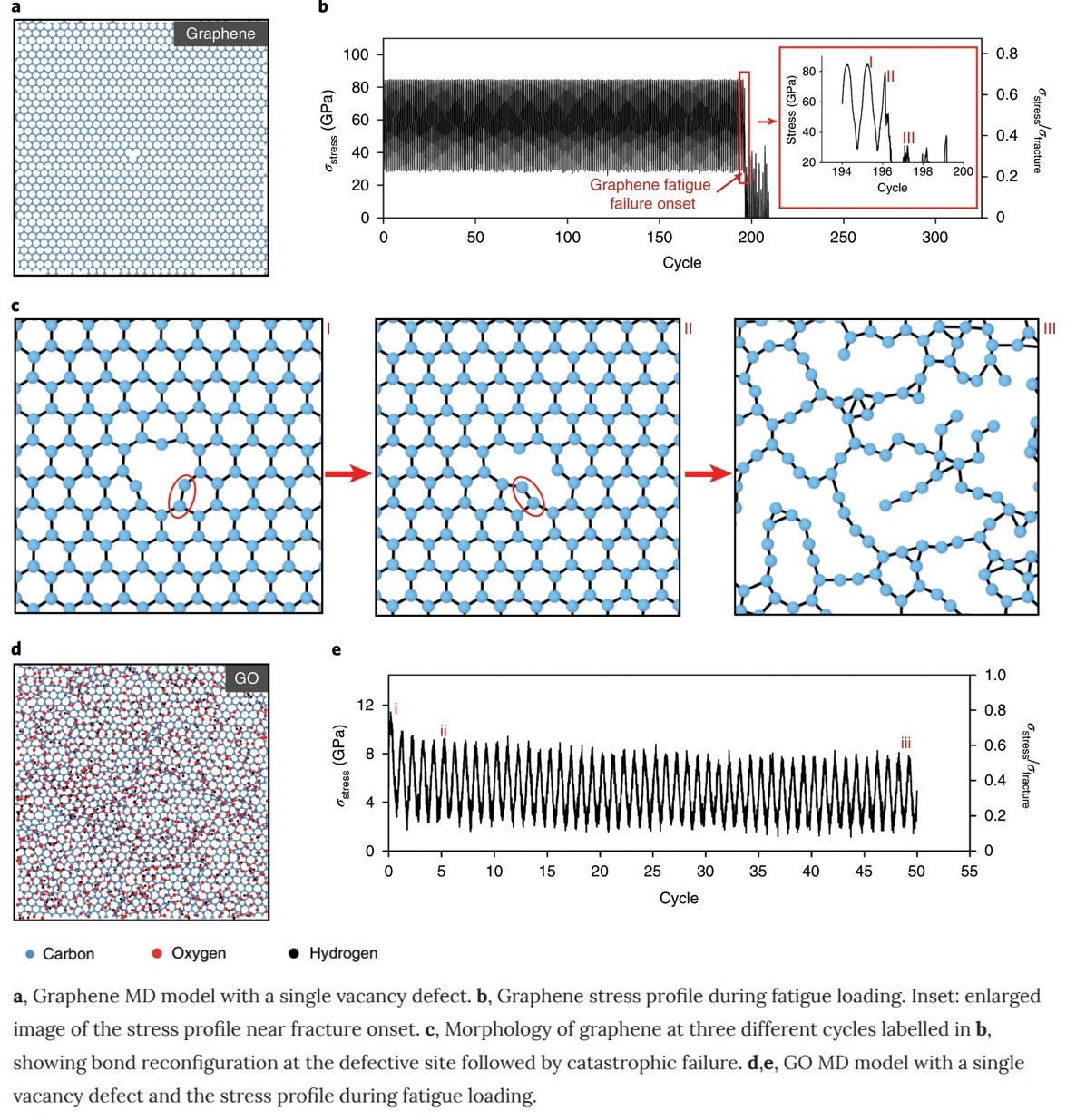Graphene is a single layer of carbon atoms and is widely known to be one of the world’s strongest materials. While it has been proposed for use as a lightweight and high strength material in aircraft, automobiles, and flexible electronics, little is known about how it holds up to repeated mechanical loading, in other words, “fatigue”. Understanding fatigue is critically important as even strong materials such as steel can fail at much lower stress levels than their ultimate tensile strengths owing to fatigue.
 A research team — consisting of U of T Engineering professors Chandra Veer Singh (MSE), Tobin Filleter (MIE) and Yu Sun (MIE), their students, and collaborators at Rice University — recently embarked in a mission to know how graphene would stand up to repeated stresses. Their approach included both physical experiments and computer simulations.
A research team — consisting of U of T Engineering professors Chandra Veer Singh (MSE), Tobin Filleter (MIE) and Yu Sun (MIE), their students, and collaborators at Rice University — recently embarked in a mission to know how graphene would stand up to repeated stresses. Their approach included both physical experiments and computer simulations.
Prof. Singh along with postdoctoral fellow Sankha Mukherjee (MSE) led the modelling portion of this study that came to a remarkable discovery about carbon-based materials!
“Using atomistic simulations, we have identified that graphene either failed catastrophically or remained undamaged during the billion-cycle loading process. There is no obvious progressive damage involved in fatigue of graphene. Such a unique failure mode is distinct from observed fatigue mechanisms in conventional materials such as metals, which generally involve progressive damage. This work shows how atomically thin materials can fatigue and provides a mechanistic understanding for the design of fatigue-resistant graphene-based macroscopic materials and structures. It also paves a way for a more comprehensive understanding of fatigue behavior in other two-dimensional materials,” says Singh. “This is unusual behaviour in that while the bonds change, there are no obvious cracks or dislocations, which would usually form in metals, until the moment of failure.”
All the findings were recently published in Nature Materials.
Read the full story by Tyler Irving for the UofT Engineering News.